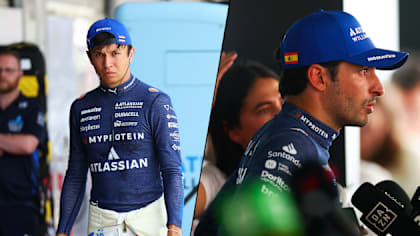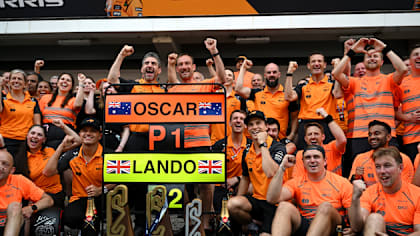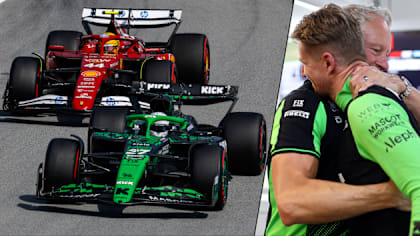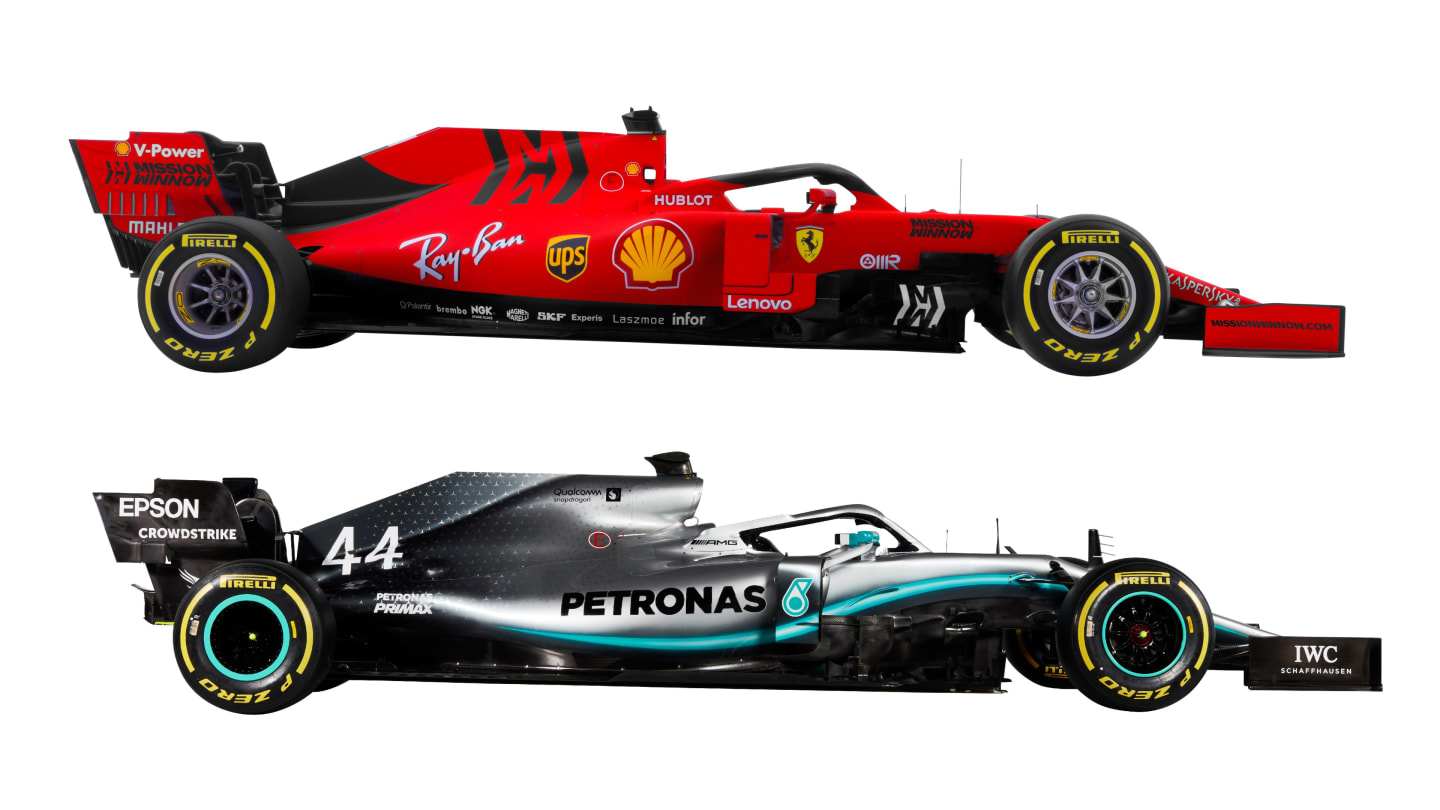
Technical
TECH TUESDAY: Will Mercedes or Ferrari's design concept be king in 2019?

Share

The fascinating, closely-matched contest between Mercedes and Ferrari which shaped the 2017 and 2018 seasons looks all set to continue this year, with pre-season testing suggesting the Scuderia has doubled up their efforts to prevail over the Silver Arrows. But which of 2019's red-hot favourites will prevail this year?
Mercedes versus Ferrari is always a titanic contest. But what lends this battle for supremacy a fascinating extra dimension is that it has been between two opposing aerodynamic philosophies: the high-rake Ferrari and the long, low-rake Mercedes. Neither one has demonstrated a convincing edge over the other, the performance advantage swinging between one team and the other almost race-by-race for the last two years.
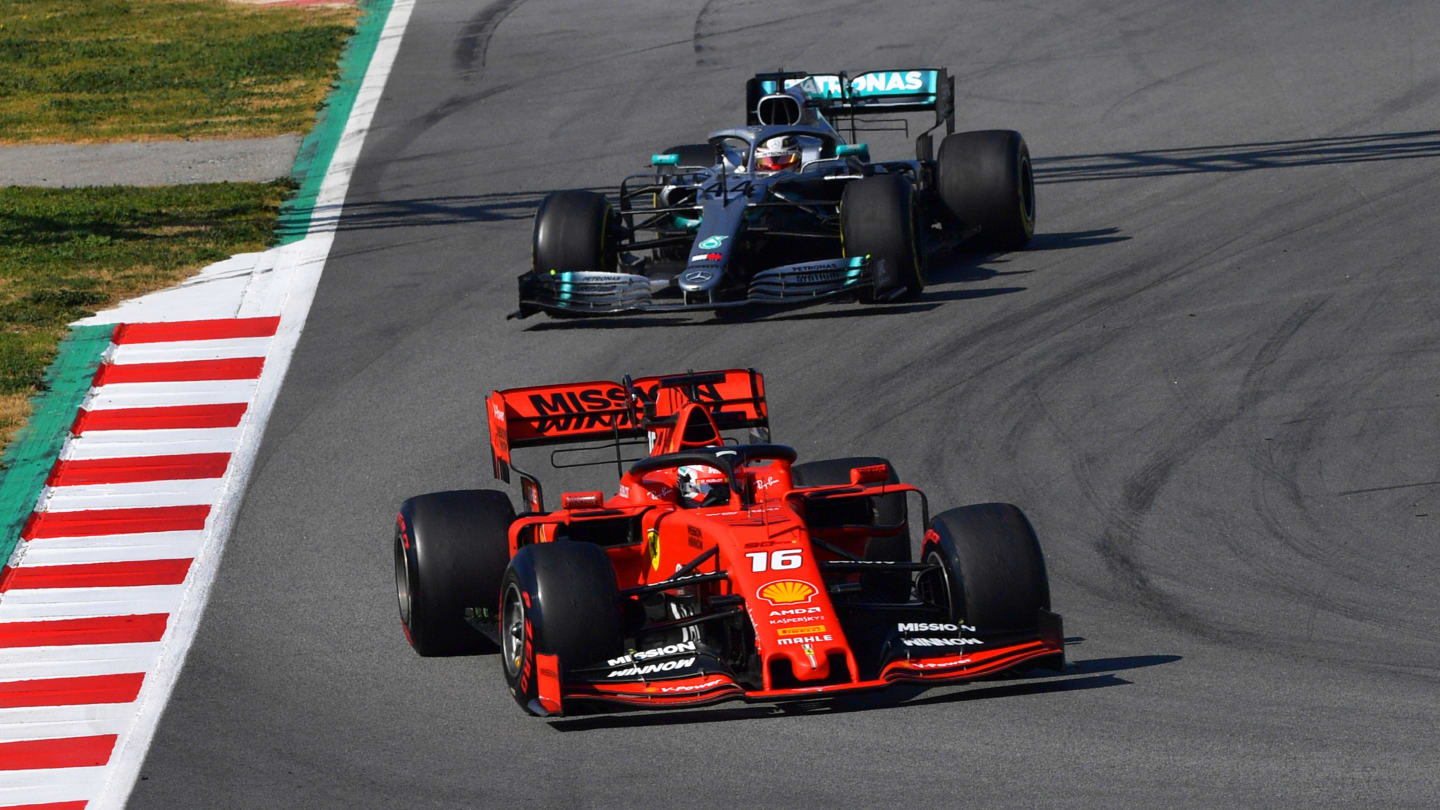
Both teams continue to develop heavily around their own concepts, with the regulation wing, barge board and associated changes for 2019 having apparently made little impact upon their chosen aerodynamic directions. The development rate of the concepts is quite visible when looking in detail at each car – and in the case of Mercedes, it could be seen even between Week 1 and Week 2 of pre-season testing.
Ferrari: Making incremental improvements on 2018
Looking first at the Ferrari SF90 and comparing it to its 2018 predecessor (the SF71H), aside from the regulation changes, the most obvious difference is to the wheelbase. Ferrari has increased this by around 2.5cm. It may seem like a tiny, insignificant change, but so tightly are the mechanical components of these cars packaged that it has allowed a significant reshaping of the rear bodywork. The distance between the front axle and cockpit remains unchanged and all the increase has been derived by moving the rear axle line further back.
Not only has this made for a more gradual downward sweep of the engine cover (numbered 7 in the image below), which will make for a cleaner, more robust airflow to the rear wing, but it has created extra space around the rear lower regions, allowing the sidepods to sweep inwards more dramatically (8).
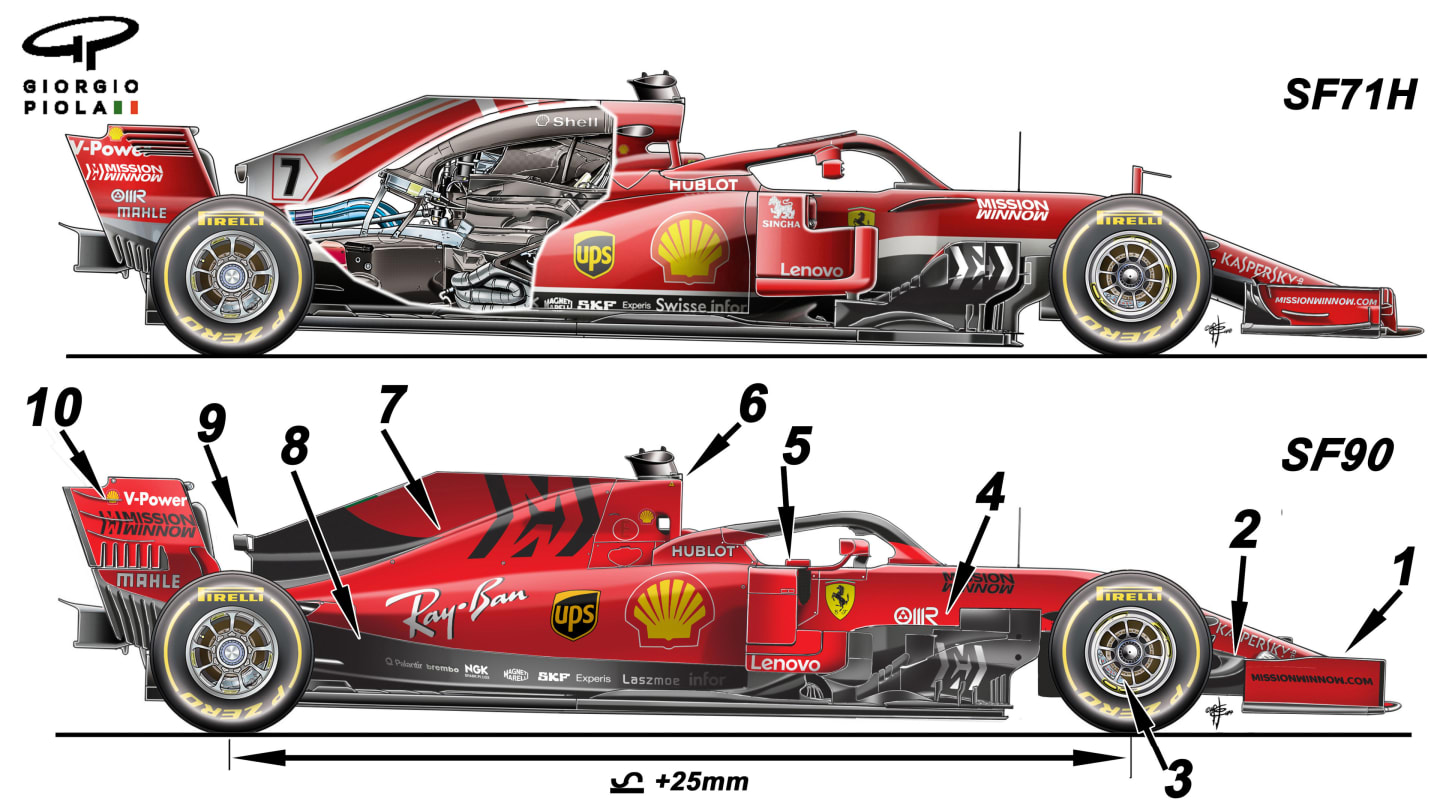
This will have the effect of enhancing the air pressure reduction at this point and the air will rush even harder than before to fill the vacuum. This speeds-up the entire airflow along the flanks of the sidepods and through the gap between the rear wheel and diffuser. The faster that flows, the harder it draws upon the airflow exiting the diffuser from the underfloor, thereby creating more downforce.
This downforce increase will apply throughout the speed range of the car, but specifically it should also allow the flow through the diffuser to remain better attached at low speeds when the rear ride height increases as the suspension is no longer being forced down so hard as the downforce bleeds away with the speed.
There is a tendency for this airflow to detach and stall at low car speeds as the gap between the road surface and diffuser increases at the same time as the airflow slows. This in effect limits how much rake can be used. The more rake the floor can run without stalling at low speeds, the greater the pressure change created, the faster the underfloor flow and the greater the downforce – at all speeds. So in effect, creating more space around the bottom rear flanks of the sidepods will increase how much rake the car can run before it becomes counter-productive to lap time.
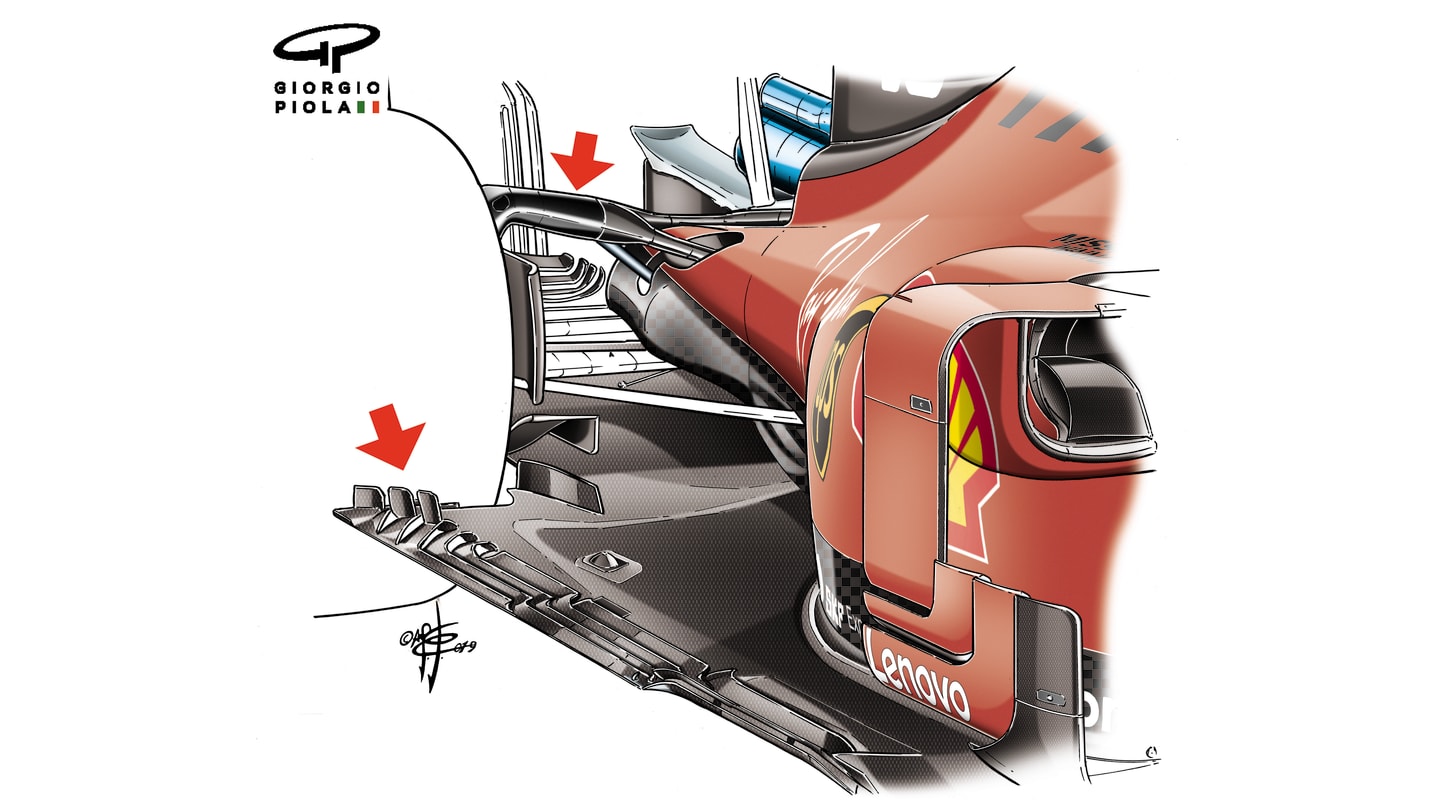
The trailing edge of Ferrari's floor and suspension design (indicated by the red arrows) have been designed to improve downforce
Other changes that can be seen in comparison of the two Ferraris include the simpler front wing endplates (1) prescribed by the regulations. The front wing pillar now has three slots (2), as per last year’s McLaren. The brake caliper (3) has been changed to a more vertical position to give more aerodynamic freedom. The barge boards (4) by regulation have changed to be lower but longer. The sidepods (5) are shorter.
The air intake (6) is much smaller this year, reflecting a change in internal packaging allowed by the wheelbase increase. The T wing (9) is mounted further away from the tail of the engine cover thanks to the wheelbase increase. The rear wing (10) reflects the regulation change in dimensions and with where the endplate gills are permitted.
Mercedes: 2019 car evolving quickly
The Mercedes W10 that appeared in the second week of testing featured a totally revised aerodynamic package to the team’s launch car, with new nose (shown below), front wing, barge boards and sidepods.

The barge board differences between this (bottom picture, with red arrows) and the original W10 that tested during the first week (picture below, without arrows) reflect the greater refinement and sophistication that has been built into the aero surfaces during several extra weeks in the wind tunnel over the version that was built for Week 1 of testing.
The original car reflected where the tunnel programme had got to by the end of November, with the launch car being built up from that time. This allowed the aero team several more weeks in the tunnel without the build pressure, knowing that even if the update was delayed, it could still be readied in time for Melbourne but without the disaster of missing any test days.
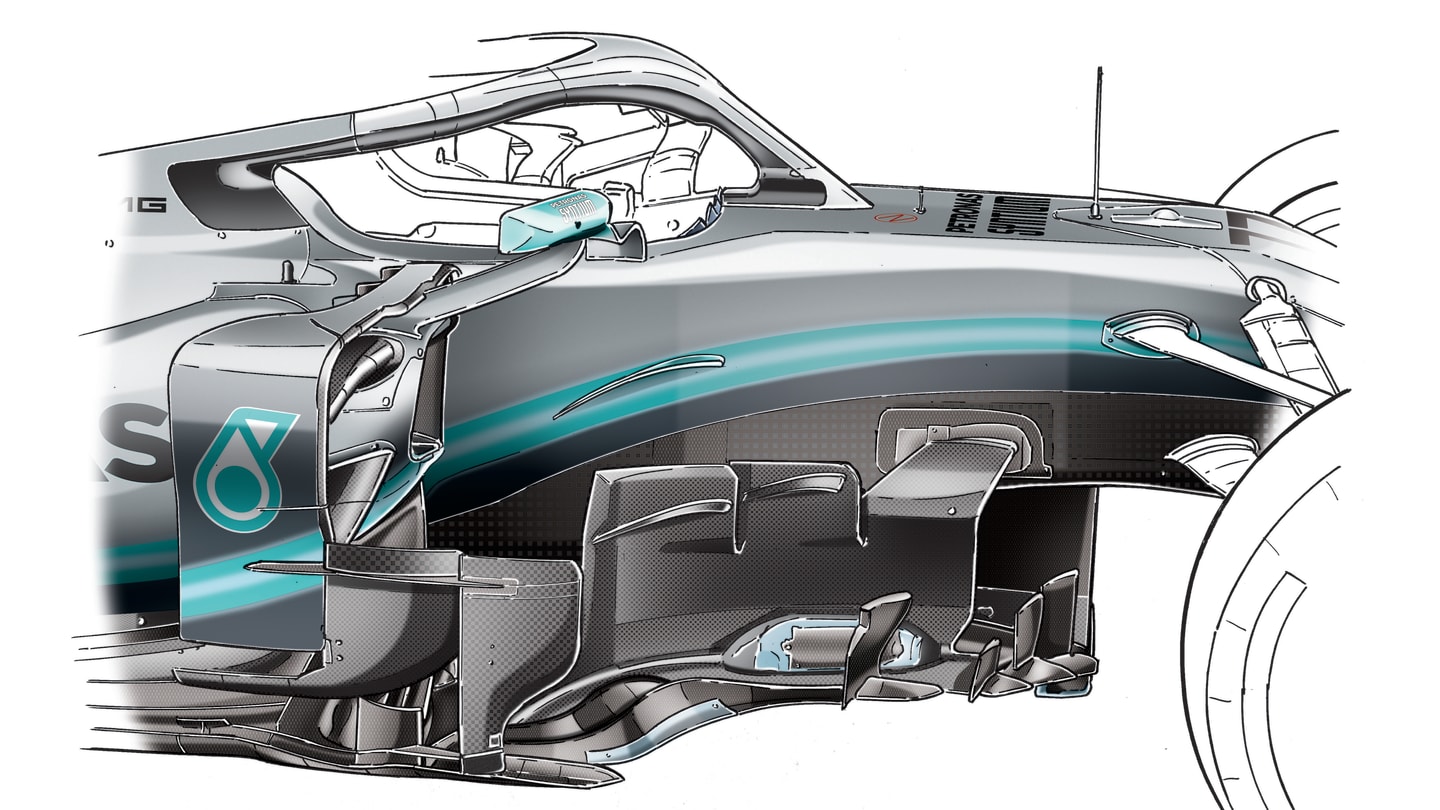
Mercedes' original barge board arrangement
The car retains an identical (very long) wheelbase to the title winners of the previous two years, and despite Ferrari’s lengthening, it’s still significantly longer than its rival and running with a visibly lower rake angle, using the maximum floor area to compensate for the less aggressive angle, whilst retaining the benefits of lower drag and a lower centre of gravity height.
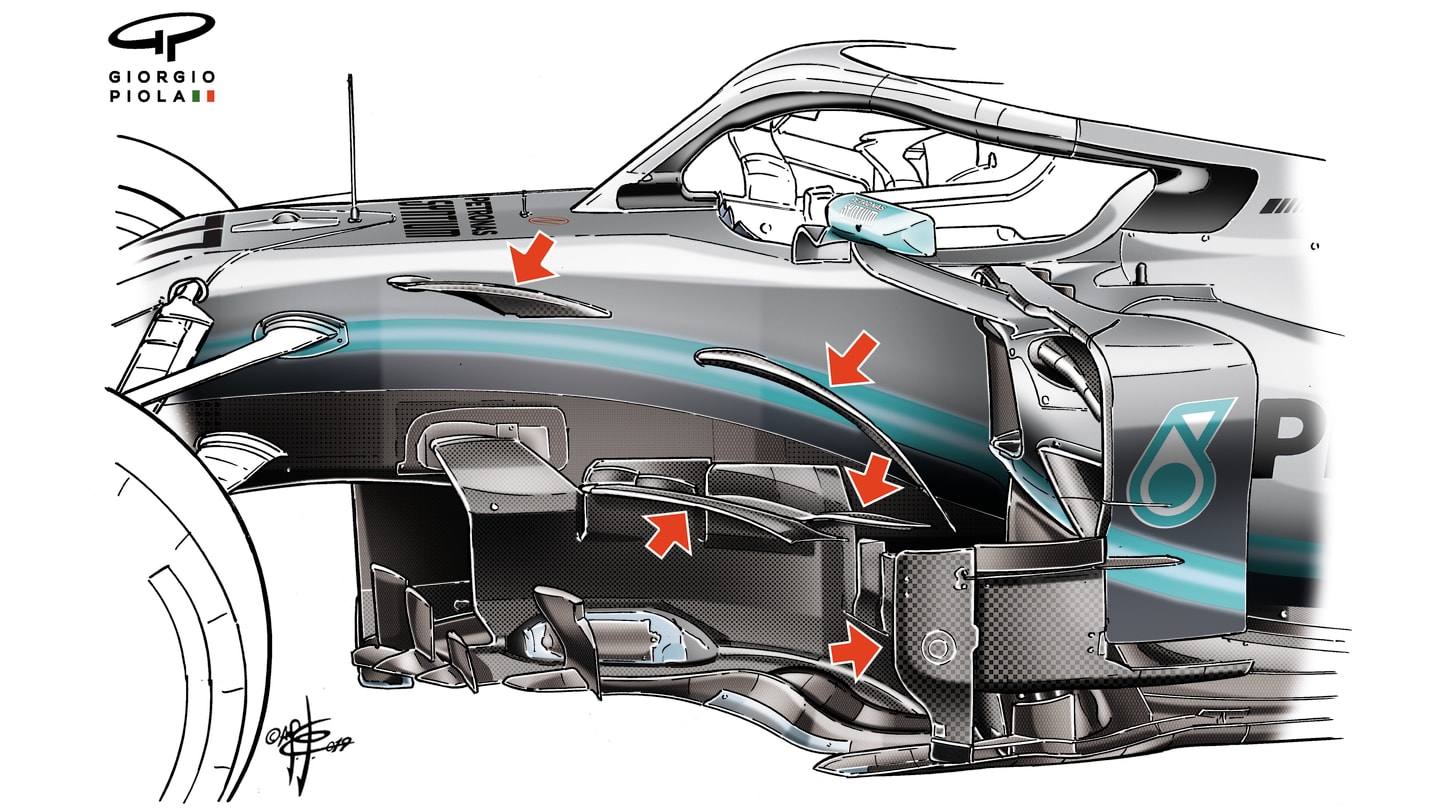
Mercedes' revised barge board arrangement
So there you have it: two contrasting concepts, both of which look set to produce very similar levels of performance. The opening salvo of this fascinating battle in Australia this weekend is going to be extra fascinating.
Mercedes or Ferrari? Which, if either, makes your F1 Fantasy team? Play now!
YOU MIGHT ALSO LIKE
News Albon rues ‘messy race' as Sainz says 'nothing went our way' in Spain as Williams fail to score for first time since Bahrain
Feature 6 Winners and 5 Losers from Spain – Who bossed it in Barcelona?
News Stella hails Piastri’s progress after 1-2 in Spain as he explains ‘risk’ posed by McLaren’s strategy
News Hulkenberg’s Ferrari overtake in Spain a ‘pinch yourself’ moment for Kick Sauber as they eye ‘springboard’ effect

